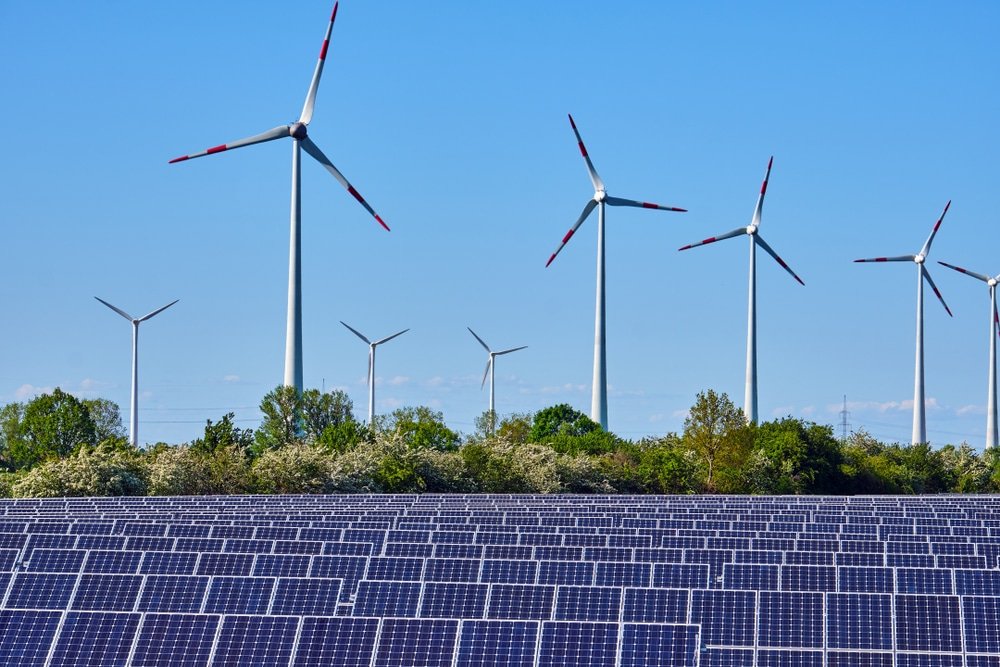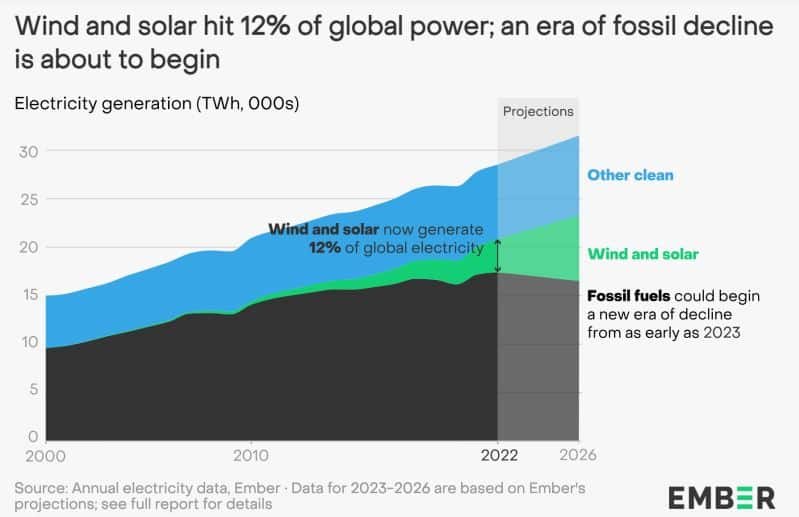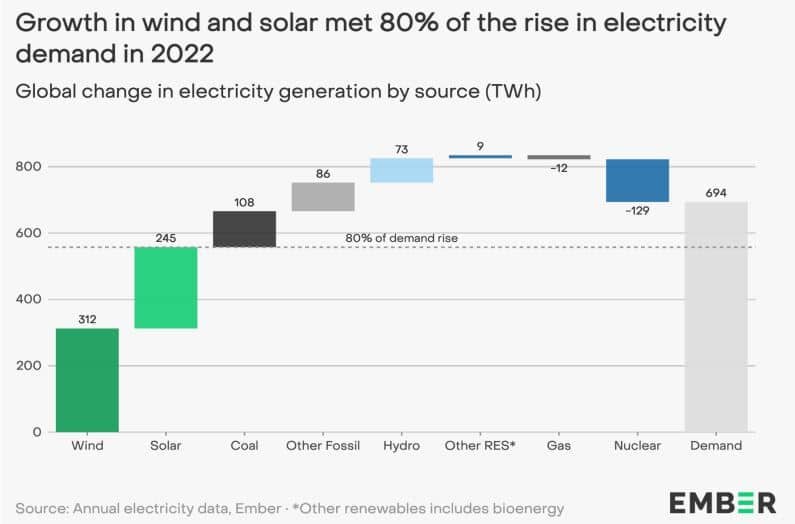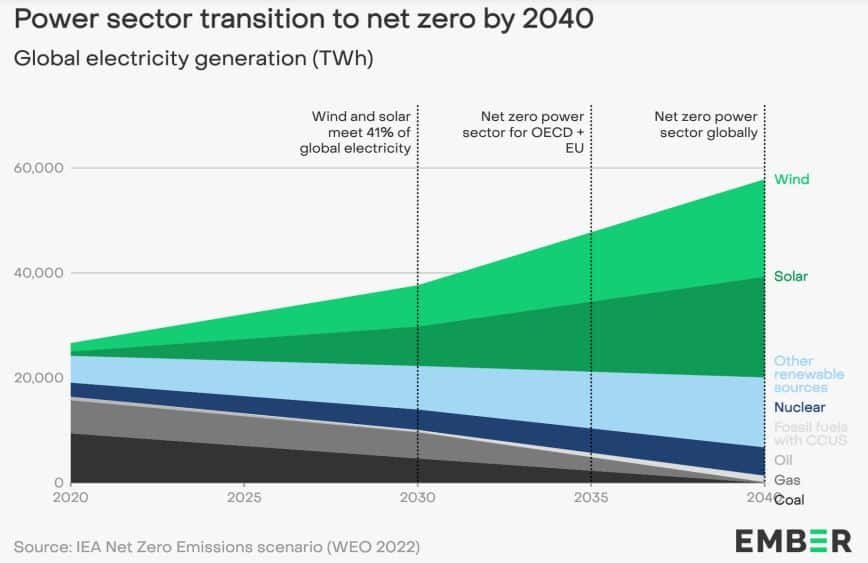Clean power sources reached a new record 12% of global electricity generation in 2022 while experts say that the power sector’s emissions may have peaked.
Electricity emissions went up by 1.3% in 2022, hitting a record high as per Ember’s report. This is due to a small increase in coal consumption to meet the rising demand for power following the end of the pandemic lockdowns.
Meanwhile, coal generation grew by 1.1% only in the same year. 2022 was also the year for things electric, e.g. electric vehicles, electrolyzers, and heat pumps and this trend will continue.
But to deliver on the required carbon emissions reductions, it should be coupled with enough investments in clean electricity transition.
The Era of Clean Power
According to the energy think tank Ember, the global electricity sector’s carbon footprint may have peaked last year and it will begin to fall in the coming years. This prediction sends a signal that the sector was at its tipping point to shifting to clean power.
In its recent report, Ember found that deployments of renewable energy in 2022 drove wind and solar to reach a new record of 12% share in the electricity mix. It went up from 10% in the previous year.
Together, all clean electricity sources – renewables and nuclear – reached 39% of global electricity, a new record high.
All these caused the carbon intensity of global power to hit a record low of 436 gCO2/kWh, the cleanest-ever.
The report covered 2022 data gathered from 78 countries, comprising 93% of the world’s electricity generation. 80% of the increase in demand for electricity after the lockdowns was met by clean power, particularly wind and solar.
The report’s lead author, Małgorzata Wiatros-Motyka said that:
“In this decisive decade for the climate, it is the beginning of the end of the fossil age. We are entering the clean power era…Clean electricity will reshape the global economy, from transport to industry and beyond.”
The rapid growth in clean power use will sustain in 2023 and the following years, the report says. And that would be enough to see that the sector’s carbon emissions will plateau or decline next year.
That happens if clean energy developers and governments continue to support generation of cheap green power.
However, the author also noted that it still depends on how businesses and individuals “put the world on a pathway to clean power by 2040.”
The global electricity sector is the largest emitter. And it’s the first sector that has to decarbonize for the world to achieve net zero because it helps unlock electrification in other sectors.
Net Zero Power by 2040
According to the International Energy Agency (IEA), the power sector must be net zero by 2040 to bring the world to net zero economy-wide by 2050.
- In the IEA Net Zero Emissions (NZE) modelling, wind and solar are the key drivers, providing 75% of the growth in clean power from now to 2050.
By 2030, wind and solar have to increase to 41% of global electricity generation. By the same year, coal generation has to decrease by 54% while gas by 24%.
Electricity demand, however, will continue to rise significantly by about 3.7% annually until 2030 as electrification intensifies.
Here’s how Ember forecasts the power sector’s transition to its 2040 net zero emissions.
Investment in clean power is critical, not only in the sector but the whole energy generation to ensure that the path to net zero is taken.
Remarkably, investment in clean energy technologies in 2022 is the same as that of fossil fuels for the first time. This is a good sign but investments must triple by the end of this decade to be on track for 1.5C.
Developing countries received financial support from large emitters such as the EU, UK, and US. The funds help them displace the dirty coal with clean renewable sources.
Yet overall, fossil fuel generation still increased in 2022 by 183 TWh. This led to the power sector’s CO2 emissions to grow by 160 million tonnes.
While the global electricity’ emissions intensity is heading towards the right direction, its absolute emissions are yet to fall. This shows that the power sector hasn’t reached yet the point where emissions reductions are at the net zero level.
- As per the IEA NZE scenario, the sector’s emissions should decline by about 7.6% each year until 2030.
Some industry experts agreed that Ember’s forecast might be attainable. But others said that it will take more years to become a reality, not this year or the next.
Whoever holds the right prediction depends on how commercial and political forces play in the transition to a low-carbon power.




